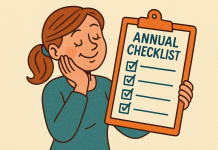Q: With Bruce Jenner coming out as transgender, I realize I have no idea how to talk to my kids about this. Help! What do I say?
I am SO glad you are asking this question! Parents who are not thinking about how to talk to their kids about issues of gender identity, sexual orientation, or other identity issues are likely to find themselves on the spot and fumbling, because I guarantee you, it *will* come up. Even very young children may ask questions about gender and identity, particularly if they meet a transgender person or hear a media account referencing gender, and older children may not just ask, but have thoughts and feelings they wish to share and discuss. Thank you for being thoughtful in preparing yourself for these conversations.
I will outline below some clear language to you can borrow from when talking to children about gender identity, but before I do, I want to emphasize a critical point:
To talk to your kids effectively about any topic, you have to get clear on what your own thoughts, feelings and values on the subject are and honestly assess any discomfort, avoidance, or conflicts that come up.
We all know that kids can tell when we are uncomfortable, unclear, or being inauthentic. I believe it is extremely important to be honest and confident when talking to kids about things that are important, complicated or possibly uncomfortable, and for some people, gender identity is one of those topics that feels tricky. This may reflect a lack of familiarity with gender identity issues in general , some discomfort about people “changing” gender, or possibly some disconnect between your personal values and opinions and what you think you “should” say.
So I say again: it is extremely important to sort out for yourself what your values and beliefs are before the topic comes up.
As a long-time GLTBQ activist and lesbian, I have deep connections in the queer community that include close relationships with many transgender and gender non-conforming people. My hope is that parents reading this blog want to send a message of openness, support, acceptance and inclusion when talking to their children about all kinds of difference, including gender identity. Messages of hate, misunderstanding, rejection, invisibility and shame have plagued queer people, and especially transgender people, resulting in overwhelmingly high rates of mental health issues, social and economic instability, family estrangement, isolation and high-risk behavior. Multiple studies have found that a staggering 41% of people who identify as transgender have attempted suicide at least once in their lifetime, nearly nine times the national average.
About gender identity in general:
- “Most of the time, people are born into a girl body or a boy body and that feels like the right body for them. But sometimes someone is born into a body that doesn’t look or feel like how they feel inside. When that happens, we might think they are a girl because their body looks like a girl, but they are a boy inside.”
- “It can be hard to feel different, and some people are not very supportive to transgender people because they don’t understand it or feel uncomfortable when someone says they are trans. In our family, we feel it’s really important to be kind and supportive to transgender people.”
About a friend or family member who comes out as transgender:
- “Joey was born in a boy body, and people thought he was a boy but he realized he was a girl inside. Now he has let us know that he is a girl and would like to be called ‘Jamie’, isn’t that cool? Now we will call him ‘she’ instead of ‘he’. It might take some practice.”
- “You might notice some changes in Uncle Jesse soon. He is going to be taking medicine to help his voice get lower and he will have surgery to make his body look more like a man’s body. This is because he is transgender and he was born with a female body.”
On the whole, my recommendations on how to talk about this echo my feelings on how to talk to kids in general about any issue that is confusing, controversial, or complicated:
1. Use clear, specific , and developmentally appropriate language.
2. Don’t be vague or beat around the bush. Kids don’t do well with vague. Instead of “Joey is going through some changes,” use descriptive sentences like those above. If you’re not comfortable with the topic or language yourself, practice and get comfortable with the words you need.
3. Use a calm, open tone. This will invite questions and discussion. If you sound anxious or hurried, children will sense there is something stressful about the topic at hand.
For more information on gender identity and how to support the transgender community, check out these wonderful resources:
National Center for Transgender Equality
GLAAD Transgender Media and Education Program












[…] Burlington Vermont Moms Blog– Talking to kids about gender identity […]
Great resource, thanks for the post! Helpful information for any age.